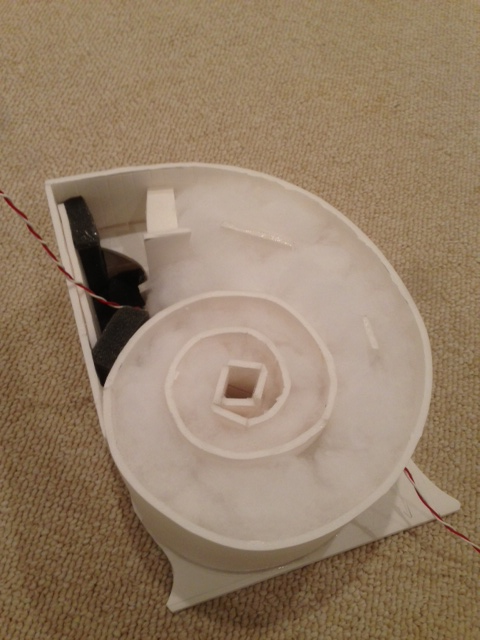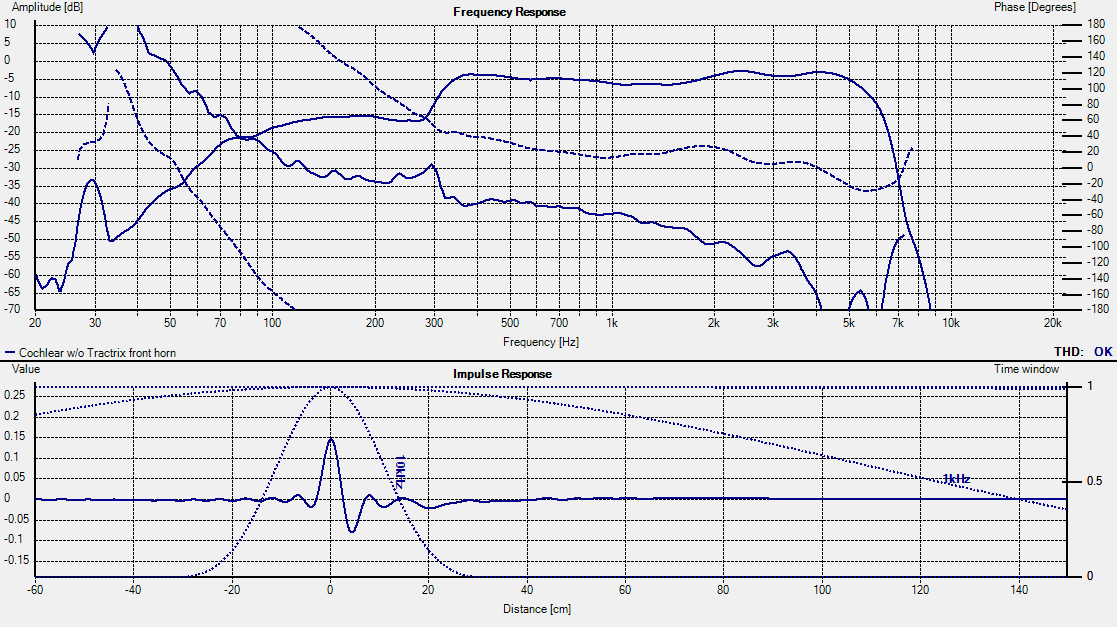OK, I still think we are dealing with a different product here. The facer I am speaking of is thicker (albeit still paper thin), sometimes slightly glossy and it costs about $20 per sheet here. It is made for presentations. It can be printed on. There are no imperfections.
The stuff we are using for Cornu has a very thin facer that easily peels off. The foam board itself is used in frames behind photographs or even paintings. It has imperfections and wouldn't be used for presentations.
The stuff we are using for Cornu has a very thin facer that easily peels off. The foam board itself is used in frames behind photographs or even paintings. It has imperfections and wouldn't be used for presentations.
Score and Bend technique explained.
That is why you cut many parallel thin (perpendicular to the bend direction) lines on the concave side so that it allows room for the paper to compress and not uncontrollably buckle and crack. The paper on the convex side is under tension and forms a nice smooth rounded surface. The foam underneath compresses or expands as needed as it has no strength. Try it with a test strip 5 cm wide x 20 cm long: cut many lines along the 5 cm direction spaced 3 to 5 mm apart. Use a sharp razor and cut only deep enough to pierce through the paper skin. Now find a round object with approximate radius similar to curve you want to form, or even a little tighter. Take the strip now scored (cut) with many cuts and press it against round object to form it slowly to conform to the curve - pull it back and forth like a strap or belt on a pulley. See how it forms a nice smooth curve with no cracking. Now hold that curved shape next to flat piece you want to glue, and glue with hot melt 10 cm sections at a time so you can finger hold it in place for 30 seconds before it sets. Then you continue along path gluing small sections at a time. This is the core technique or "trick" for making smooth easy curves in foam core.
I do not think steamed plywood is easier to make. Once you master the foam core it is trivial to make beautiful smooth curved surfaces as long as you are OK with it being made out of foam core. Wood will be stronger but hard to work with.
there are no hard facing just some thin paper on both sides. If you bend the foam i got it cracks with a loud noice.

That is why you cut many parallel thin (perpendicular to the bend direction) lines on the concave side so that it allows room for the paper to compress and not uncontrollably buckle and crack. The paper on the convex side is under tension and forms a nice smooth rounded surface. The foam underneath compresses or expands as needed as it has no strength. Try it with a test strip 5 cm wide x 20 cm long: cut many lines along the 5 cm direction spaced 3 to 5 mm apart. Use a sharp razor and cut only deep enough to pierce through the paper skin. Now find a round object with approximate radius similar to curve you want to form, or even a little tighter. Take the strip now scored (cut) with many cuts and press it against round object to form it slowly to conform to the curve - pull it back and forth like a strap or belt on a pulley. See how it forms a nice smooth curve with no cracking. Now hold that curved shape next to flat piece you want to glue, and glue with hot melt 10 cm sections at a time so you can finger hold it in place for 30 seconds before it sets. Then you continue along path gluing small sections at a time. This is the core technique or "trick" for making smooth easy curves in foam core.
I do not think steamed plywood is easier to make. Once you master the foam core it is trivial to make beautiful smooth curved surfaces as long as you are OK with it being made out of foam core. Wood will be stronger but hard to work with.
isnt it easyer to steam some thin playwood 3-4 mm. Specially when i want some 5mm routing (is this the right frase in english) in both back and front.
No, that is much harder. You will find that when routing, you will need a third board cut right through in order to align the front and back routered boards. Big hassle if you ask me.
The only thing I can add to X's method is to say that I don't pull the board back and forth like a belt strap, I found that dislodged the facer and felt awkward. I cup my hand directly over the rounded surface and force the foam into the curve with the same back and forth motion as X describes. As mentioned always use a curve that is tighter than you want because the foam does have a certain amount of memory.
I am not feeling well so I am heading home and will look to see if I have any pics.
OK, here are the pics of forming the foam back in post #2.
http://www.diyaudio.com/forums/full...ornu-spiral-horn-now-you-can.html#post3283684
http://www.diyaudio.com/forums/full...ornu-spiral-horn-now-you-can.html#post3283684
AHA
I think i got the picture a have now done my first spiral (nearly) what glue to glue the top or the bottom i build it in MDF board and foamboard and glued foam at MDF with hot melt glue but that isnt gone to work on the rest. is white wood glue god enough. Im very sorry for my bad spelling but its a long time since i weote in english.i hope you understand what i mean.
I think i got the picture a have now done my first spiral (nearly) what glue to glue the top or the bottom i build it in MDF board and foamboard and glued foam at MDF with hot melt glue but that isnt gone to work on the rest. is white wood glue god enough. Im very sorry for my bad spelling but its a long time since i weote in english.i hope you understand what i mean.
old dokument
I found this old document from 2001 :
Plan
If you want to build a spiral horn, here is how to proceed. Note that the Cornu Spiral Horn is designed and built in a different way wich is not suitable for DIY
Take two 15mm plywood boards, 1m x 1m. Cornu recommends to use beech wood.
Mark the center of one of the plywood boards(50cm from each side). Draw a circle around the center so that your driver will fit. Cut out the circle. This will be your front plate.
Compute a straight exponential horn with throat width of 12 mm and lower cutoff of 30 Hz. Assume a height of 12 cm.
Take a large sheet of paper.
Draw the straight horn onto the paper.
Cut out the horn.
Position the "horn" so that it´s axis i horisontal. Glue a thin rope to the paper along the axis. Cut the paper into vertical stripes of 2 cm widtheach but avoid cutting the rope.
Repeat the last four steps four times.
Take the unmarked (botton) of the plywood boards and mark it´s center. Draw a circle of 10 cm radius around the center. Mark the circle at 0, 90, 180 and 270 degrees.
for each mark on the circle Glue the throat of one horn to the mark.
Bend the horns so that they forms four spirals. Leave a lttle space (3-4 mmm)between the spirals- the walls will take that space.
Take a material that is stiff but can be bent and form the spiral walls from it.
Glue the spiral walls to the bottom
Glue the front plate to the rest
Mount your driver.
Why buy a spiral horn?
The cornu Spiral horn requires CNC machining. This makes it´s strukture very rigid. The stability of the horn does not depend on the lifetime of the glue used, then.
The curve of the spirals smoothes the frequecy response, compared to a exponential growth curve.
The driver is sunk flat into the front plate. This avoid reflections in the upper midrange.
Special treatment is used for the spiral walls.
http://www.cornu.purespace.de/flat1_plan.html 2001-07-12
I found this old document from 2001 :
Plan
If you want to build a spiral horn, here is how to proceed. Note that the Cornu Spiral Horn is designed and built in a different way wich is not suitable for DIY
Take two 15mm plywood boards, 1m x 1m. Cornu recommends to use beech wood.
Mark the center of one of the plywood boards(50cm from each side). Draw a circle around the center so that your driver will fit. Cut out the circle. This will be your front plate.
Compute a straight exponential horn with throat width of 12 mm and lower cutoff of 30 Hz. Assume a height of 12 cm.
Take a large sheet of paper.
Draw the straight horn onto the paper.
Cut out the horn.
Position the "horn" so that it´s axis i horisontal. Glue a thin rope to the paper along the axis. Cut the paper into vertical stripes of 2 cm widtheach but avoid cutting the rope.
Repeat the last four steps four times.
Take the unmarked (botton) of the plywood boards and mark it´s center. Draw a circle of 10 cm radius around the center. Mark the circle at 0, 90, 180 and 270 degrees.
for each mark on the circle Glue the throat of one horn to the mark.
Bend the horns so that they forms four spirals. Leave a lttle space (3-4 mmm)between the spirals- the walls will take that space.
Take a material that is stiff but can be bent and form the spiral walls from it.
Glue the spiral walls to the bottom
Glue the front plate to the rest
Mount your driver.
Why buy a spiral horn?
The cornu Spiral horn requires CNC machining. This makes it´s strukture very rigid. The stability of the horn does not depend on the lifetime of the glue used, then.
The curve of the spirals smoothes the frequecy response, compared to a exponential growth curve.
The driver is sunk flat into the front plate. This avoid reflections in the upper midrange.
Special treatment is used for the spiral walls.
http://www.cornu.purespace.de/flat1_plan.html 2001-07-12
Last edited:
I have now built two cornu 28 x 28 x 4 but what driver should i have ? i have these to choose from:
FE103EN 97 USD
FE107E 115 USD
FF105WK 90 USD
P1000K 42 USD
FE125WK 102 USD
FE126EN 106 USD
Prices in Sweden but in USD
I would go with FF125WK as several folks have tried that with success in a 28 in class Cornu. It has a little more xmax than the EN series which are all sub 1 mm.
- Home
- Loudspeakers
- Full Range
- Ever think of building a Cornu Spiral horn? Now you can!

